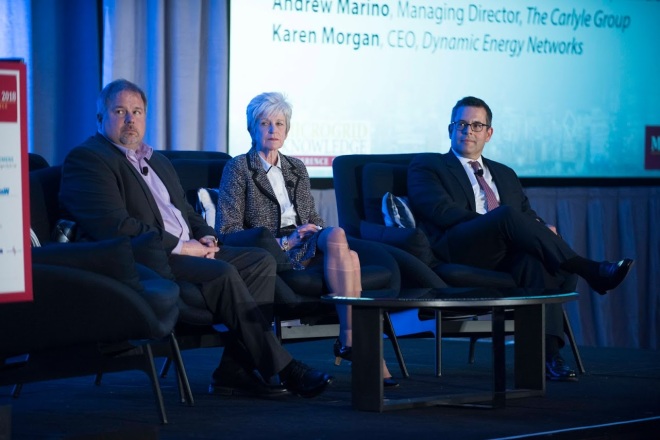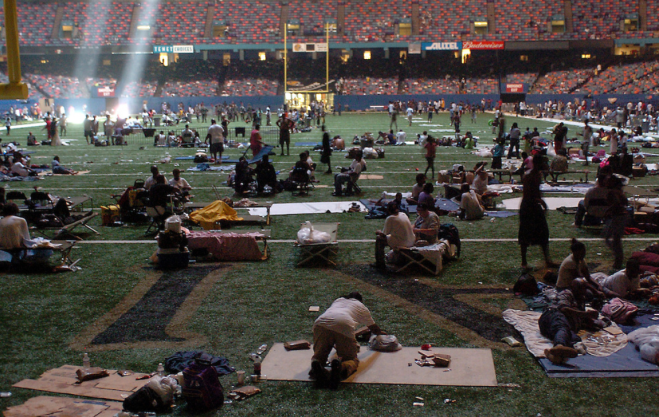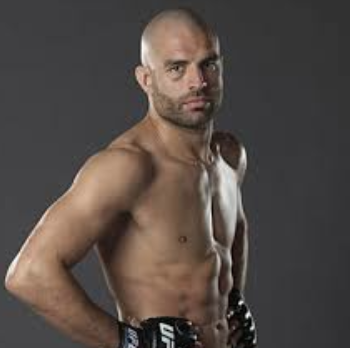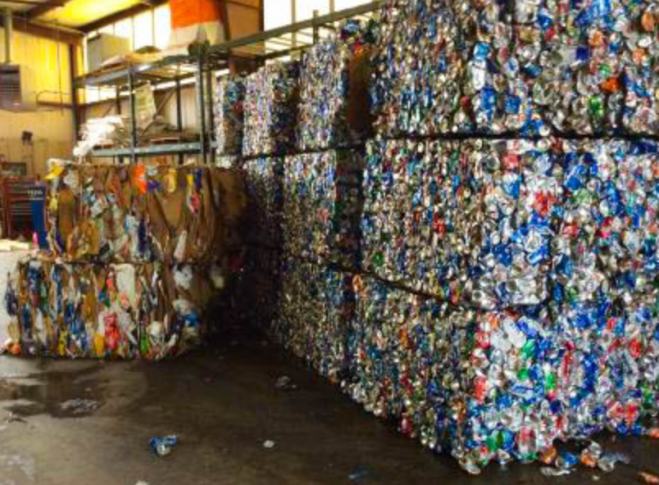June’s Green Sports Alliance Summit took place at Atlanta’s LEED Platinum jewel, Mercedes-Benz Stadium. Forward thinking and acting Arthur Blank, owner of the Falcons and Atlanta United, directed the people who designed and built the stadium to do whatever it took to get the country’s first Platinum designation for a pro sports stadium.
The community-minded Blank also made sure that the stadium would serve the adjacent West Side neighborhood: Local residents helped build and are helping to operate Mercedes-Benz Stadium. And, in the case of a natural disaster or other type of emergency, the stadium will be transformed into a resilient community center.
But what if an owner is not as committed to the environment and/or the community as Mr. Blank, and/or doesn’t have as deep pockets?
Enter the innovative investment platform, Dynamic Energy Networks (DEN), backed by the Carlyle Group, along with its powerful global technology partner, Schneider Electric.
DEN brings deep experience in energy infrastructure investment and design, especially as it relates to distributed energy resources and Microgrid solutions. DEN/Carlyle has the experience and long-term vision to take on complex infrastructure projects such as stadia and arenas.
Schneider Electric is leading the digital transformation of energy management and automation and has deep experience in energy efficiency upgrades at sports venues across the world.
As long-term investors, DEN stands behind these solutions, taking on the financial risk on behalf of owners, venues, and other sports organizations.
GreenSportsBlog spoke with Karen Morgan, President and CEO of DEN, to get a sense of the “Art of the Possible” as it relates to the delivery of resilient, reliable, secure and sustainable solutions at stadia and arenas.
GreenSportsBlog: Karen, your input on the “The Art of the Possible: New Business Models to Achieve Your Community’s Energy Goals” panel at the Green Sports Alliance Summit in June, was a master class on the business of large scale renewable and microgrid projects, the trend towards distributed energy generation and what that can mean for stadiums, arenas and the communities they serve. We will get into that in a bit, along with how Dynamic Energy Networks fits into the Green-Sports world. But first, how did you get into the renewable energy business?
Karen Morgan: I’ve been in renewable energy in the United States for the past 12 years. Prior to that, I explored energy efficiency and renewable generation solutions in Central Europe. But my introduction to renewables came back in 1995, when we started a company that evolved from a data driven network to a trading platform for commodity chemicals.

Karen Morgan, President and CEO of Dynamic Energy Networks (Photo credit: Dynamic Energy Networks)
GSB: Commodity chemicals trading? That seems like an unusual way in to the renewables world…
KM: That’s how most people react but we became a “Poster Child for Renewables” of sorts. Because, when you think about it, solar panels turn solar power into electricity because of…
GSB: …Chemicals!
KM: Exactly!
GSB: So what parts of the renewable energy business have you been in?
KM: I started on the development side, then we put together various financing structures to fund projects, providing advisory and development services. We focused on the commercial & industrial (C&I), municipality, educational and other markets. Eventually we co-founded an investment platform — RET Capital five years ago — which owned and operated utility scale solar and wind assets.
GSB: What was that like?
KM: We were located in California, and it was like the Wild, Wild West out there with solar. Of course, the industry grew up in no time and it is quite amazing to see how rapidly markets have evolved in and around renewable energy and adjacent utility-like services.
GSB: What led you to form Dynamic Energy Networks and what does the company do?
KM: Well, we formed DEN to address a MASSIVE macro-problem: The vulnerability of the existing centralized electricity grid to extreme weather and other natural disasters, as well as terrorism, cyberattacks and more. Working with our partners, we offer the expertise, capital and technical capabilities to design, build, own and operate decentralized microgrids at scale. Densely populated urban centers, university campuses and more are our targets. DEN/Carlyle quarterbacks the microgrid development process from concept to operation by bringing experienced, sophisticated and flexible capital solutions. And Schneider Electric adds essential state-of-the-art digital technology know how, with hundreds of microgrids already built and installed, to allow all aspects of our microgrids to communicate seamlessly with each other.

Karen Morgan speaks on a panel with Mark Feasel (l), VP Smart Grid at Schneider Electric andAndrew Marino (r), Managing Director at The Carlyle Group (Photo credit: Microgrid Knowledge)
GSB: Sounds like you’ve put together a microgrid All-Star team with DEN. Can you give an example of a project DEN is working on?
KM: Sure! We are working with a coalition of partners to integrate a large-scale series of microgrids, which include electric vehicle infrastructure and distributed energy resources, to meet sustainability goals set by the governor of the state. While working within the framework of a multi-billion dollar redevelopment project with over 30 different companies involved, DEN and Schneider Electric will ensure the avoidance of a SINGLE POINT OF FAILURE and provide for a resilient, reliable, decentralized, and secure energy system to this critical infrastructure.
GSB:…That is a BIG DEAL! So is it fair to say that solar panels on the roof of a home or a solar powered car port in the parking lot of a stadium would be examples of decentralized or distributed generation as compared to the centralized power plant-sub-station model?
KM: That’s right. Now with intelligent control systems, like those developed by Schneider Electric, various renewable and traditional energy generation systems can be distributed throughout a localized site, such as a mixed-use stadium complex or a college campus. Within these sites, energy assets such as, solar, wind, energy storage, fuel cells, and combined heat and power (CHP), can be networked to support each other and deliver electricity to the customer in the case of a grid outage or the failure of a single, centralized source. Schneider Electric’s Ecostruxure controls harden microgrids against cyber security breaches and mitigate the risk of a cyber-attack on the centralized grid, ensuring an uninterrupted power supply for the customer.
GSB: This sounds like DEN is involved in the early days of a powerful and important mega-trend towards decentralized generation and microgrids. Where do sports venues fit in?
KM: In many industry sectors, including sports, the opportunity to “island” away from the grid in the case of an outage or security breach or storm, and achieve resilience, did not truly exist until recently. That is, where some of the technology may have been available, the economics did not make sense and the optimization tools were not commercially available. In addition, the size and complexity of such systems were not attractive to third party capital. As advanced technology has become increasingly available, and costs continue to decline, third party capital is becoming more interested in decentralized, “two way” flexible energy solutions. DEN is well suited to lead the charge here as Carlyle wrote the playbook on flexible long-term contracts for infrastructure globally. DEN is able to leverage thirty years of experience, knowing how to transfer risk away from owners by providing predictable long-term service agreements, eliminating the capital expense associated with completing large, infrastructure projects. So we operate the microgrid; the venue owner simply pays for the electricity they use and for resilience services.
GSB: What do you mean by resilience?
KM: Resilience in this case means providing reliable, clean and ongoing generation so the venue performs at peak whenever necessary, especially during unexpected outages. Venues become a safe haven for people to seek refuge when there is a local, regional or national emergency. The benefit of integrating microgrid and distributed energy resource solutions is having the ability to operate the stadium at an appropriate level for a prescribed period of time, independent of the utility grid. This is essential, in terms of business continuity, safety for fans, employees and the broader community
GSB: So you don’t have a tragedy as was suffered by the people of New Orleans at the Superdome during Katrina in 2005…
KM: That’s right. This is particularly relevant in the face of increasing intensity of extreme weather events like storms, wildfires and droughts. Resilience also means that sports organizations can trust that they will have a reliable source of energy when bidding for mega-events like the Super Bowl or the FIFA World Cup.
GSB: That has to be crucial for organizations like the IOC and FIFA. Going back to something you said earlier…what do you mean by experienced or sophisticated capital?
KM: DEN and the Carlyle Group have decades of experience working on critical infrastructure investments, in particular complex projects with long sales cycles that involve the C-suite.
GSB: So the capital is not only experienced and sophisticated, it is also patient.
KM: Exactly. Carlyle’s initial commitment of $500 million of flexible capital with no cap is a great launch pad to build out a multi-billion dollar energy infrastructure portfolio. And we’re hitting the market at the right time. The cost of renewable energy generation, energy storage, and other advanced resilient infrastructure technologies, continues to decline precipitously.
GSB: Which all sounds ideal for sports venues…
KM: Absolutely. As mentioned earlier, sports venues are part of a community’s critical infrastructure. They matter! For the most part, they’re centrally located. They’re tied to a region’s transportation infrastructure. When there’s an emergency, that’s where people go for toilets, cots, and much more. We saw what happens when this critical infrastructure failed back in 2005 with the Superdome and Katrina. Contrast that with how well stadiums and arenas performed last summer in Houston during Hurricane Harvey. Major improvements have already been made and we’re working to accelerate the pace in what we see as an underserved market. The stadium or arena as a sports venue on game day, as a resilience center during emergencies and potentially, as a source of electricity to the grid or surrounding other critical infrastructure on non-game days…

Thousands of evacuees lived under squalled conditions inside the Superdome while they waited to be evacuated after Hurricane Katrina hit New Orleans in August, 2005. Microgrids, of the sort developed by Dynamic Energy Networks, can turn large venues into places where the public finds relief from natural and other disasters (Photo credit: Willie J. Allen, Jr.)
GSB: ….Meaning that, depending on the regulatory environment, if a stadium or arena has on-site solar, on non-game days, it can sell the electricity coming from the panels to the grid — or to homes and businesses in the immediate area if they are connected via microgrid. Does Dynamic Energy Networks have any sports venue clients yet?
KM: Not yet. We and Schneider Electric made a strategic decision to reach out to the sports industry, starting by attending the Green Sports Alliance Summit in Atlanta. Our friends Dusty Baker and Bernard King…
GSB: …respectively, the former Washington Nationals manager and member of the Naismith Basketball Hall of Fame…
KM: …who spoke at the Summit have both been involved in the solar business since their playing days. We look forward to working with both Dusty and Bernard, both sustainability leaders!
GSB: Phenomenal! Especially since Bernard King is a hero of mine as I am die-hard Knicks fan — which means I’ve been dying hard for two decades! I look forward to a follow up GSB interview with you about DEN’s first sports projects.
Please comment below!
Email us: lew@greensportsblog.com
Friend us on Facebook: http://facebook.com/greensportsblog
Tweet us @GreenSportsBlog
#CoverGreenSports


